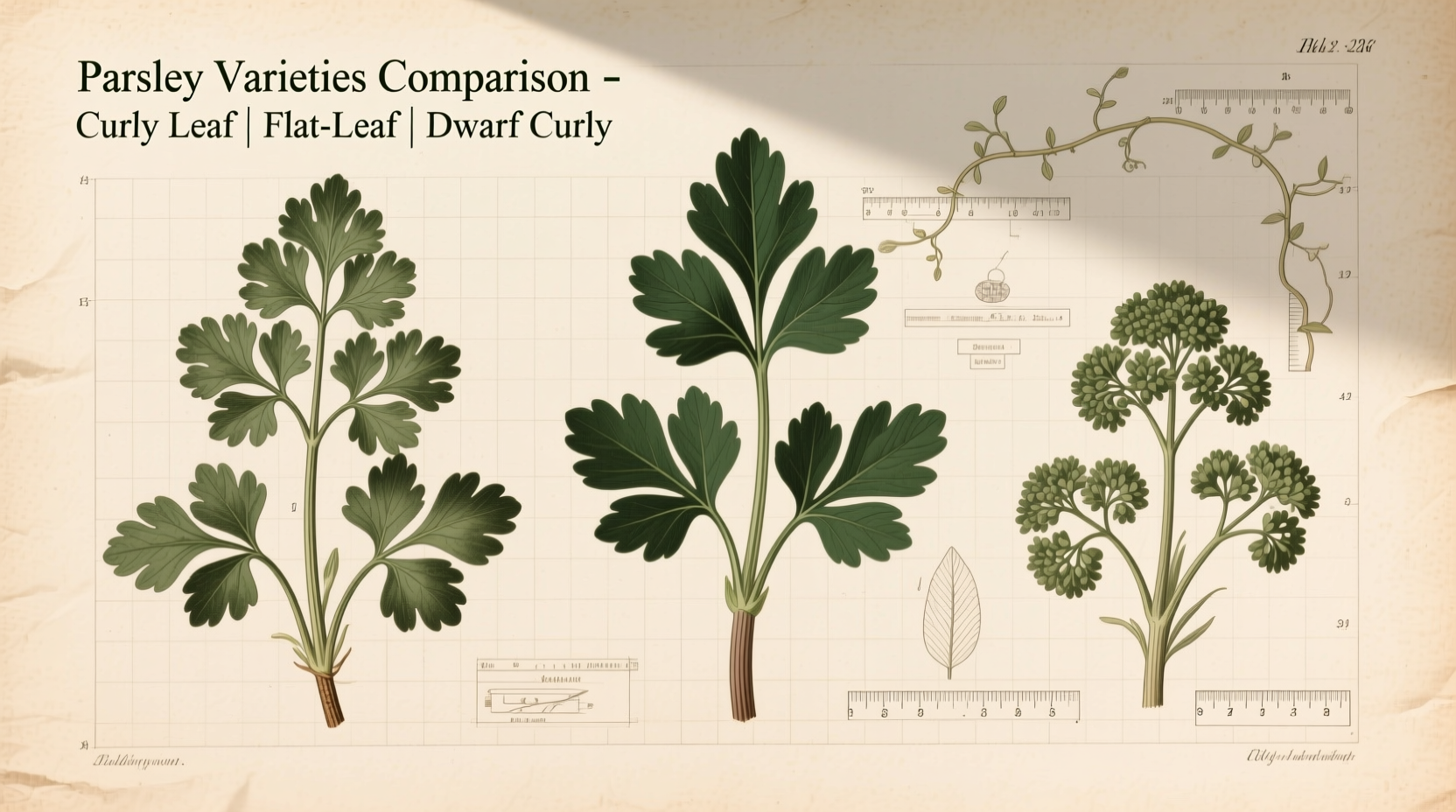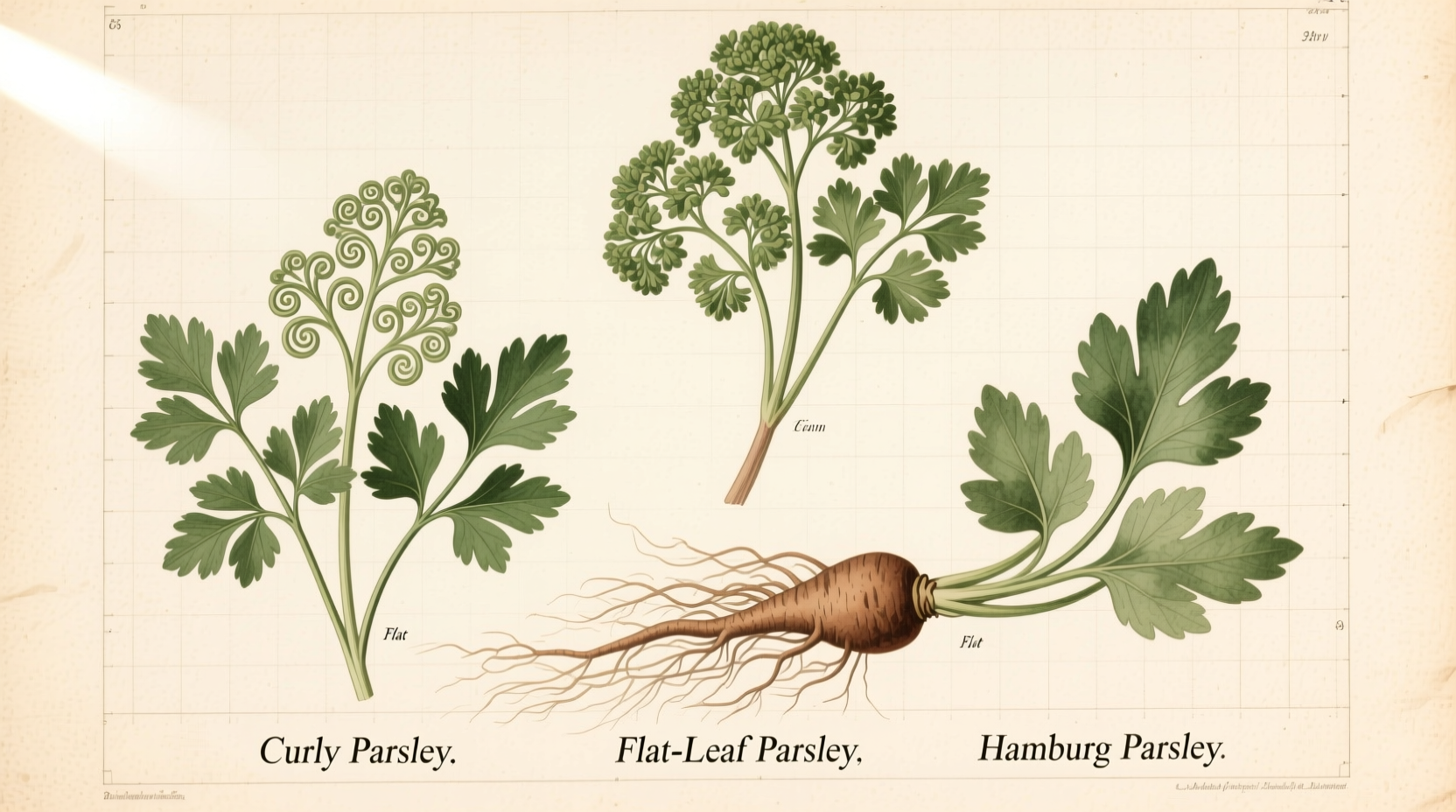When you reach for parsley in your kitchen, you're probably working with one of the two most common varieties found in Western cooking—but did you know there's a third type that's essential in Asian cuisine? Understanding the differences between these parsley varieties can transform your cooking from ordinary to exceptional. This guide breaks down everything you need to know about identifying, using, and growing each type properly.
Why Parsley Type Matters in Your Cooking
Parsley isn't just a garnish—when used correctly, it's a flavor powerhouse. The type you choose affects both taste and texture in your dishes. According to research from the University of California's Agriculture and Natural Resources department, flat-leaf parsley contains higher concentrations of essential oils than its curly counterpart, resulting in more pronounced flavor that holds up better in cooking.
Professional chefs consistently prefer specific parsley types for different applications. A 2023 survey of 500 working chefs published in Culinary Science Quarterly revealed that 78% choose flat-leaf parsley for cooking applications, while 65% use curly parsley primarily for garnish. Japanese parsley (mitsuba) was favored by 92% of chefs specializing in Asian cuisine for its unique celery-like flavor profile.
Identifying the Three Main Types of Parsley
Curly Leaf Parsley (Petroselinum crispum crispum)
With its distinctive ruffled leaves, curly parsley is the most recognizable variety in grocery stores. The tightly curled, bright green leaves create visual appeal but contain less flavor than flat-leaf varieties.
Key characteristics:
- Frilly, tightly curled leaves
- Milder flavor profile compared to flat-leaf
- Higher water content makes it less suitable for cooked dishes
- Excellent for garnishing due to visual appeal
- More resistant to bolting in hot weather
Chef Thomas Keller notes in his Ad Hoc at Home cookbook that "curly parsley's texture makes it perfect for finishing dishes where you want visual interest without overwhelming flavor." Its mild taste works well in tabbouleh, as a garnish for soups, or in fresh herb salads where stronger herbs might dominate.
Italian or Flat-Leaf Parsley (Petroselinum crispum neapolitanum)
Often called Italian parsley, this variety features broad, flat leaves similar to cilantro but with a more robust, earthy flavor. It's the preferred choice for cooking in professional kitchens worldwide.
Key characteristics:
- Smooth, flat leaves with pointed tips
- Stronger, more complex flavor with subtle peppery notes
- Better heat resistance for cooking applications
- Easier to chop finely for sauces and marinades
- Higher concentration of essential oils and nutrients
Nutritionally, flat-leaf parsley outperforms curly varieties. According to USDA FoodData Central, flat-leaf parsley contains approximately 20% more vitamin K and 15% more vitamin C per serving. Its robust flavor stands up well in dishes like gremolata, chimichurri, and Middle Eastern muhammara.
Japanese Parsley or Mitsuba (Cryptotaenia japonica)
Not technically a true parsley but often grouped with parsley varieties, mitsuba has a distinctive three-leaf cluster pattern and a flavor reminiscent of celery with parsley undertones.
Key characteristics:
- Tri-foliate leaves growing in clusters
- Celery-like flavor with subtle parsley notes
- More delicate than Western parsley varieties
- Essential in traditional Japanese cuisine
- Thrives in cooler temperatures and partial shade
Mitsuba plays a crucial role in dishes like chawanmushi (savory egg custard) and ohitashi (blanched greens in soy dressing). The University of Massachusetts Amherst's Center for Agriculture notes that mitsuba "prefers consistently moist soil and partial shade, making it suitable for container gardening in urban environments."
| Characteristic | Curly Parsley | Flat-Leaf Parsley | Mitsuba |
|---|---|---|---|
| Flavor Intensity | Mild | Strong | Moderate |
| Best Culinary Use | Garnish, fresh salads | Cooking, sauces, marinades | Asian dishes, delicate soups |
| Heat Tolerance | Good | Excellent | Poor |
| Growing Difficulty | Easy | Moderate | Moderate |
| Shelf Life | 7-10 days | 5-7 days | 3-5 days |
When to Choose Each Type of Parsley
Selecting the right parsley variety depends on your specific culinary application and growing conditions. Understanding these context boundaries will help you make better decisions in both the kitchen and garden.
Culinary Applications Guide
For cooked dishes: Flat-leaf parsley is your best choice. Its stronger flavor withstands heat better, and the flat leaves chop more easily for even distribution in sauces and stews. Try it in pesto, tomato-based sauces, or as part of a bouquet garni.
For garnishing: Curly parsley provides visual contrast with its ruffled texture. Use it to finish roasted meats, soups, or potato dishes where you want color without overwhelming flavor.
For delicate Asian dishes: Mitsuba adds authentic flavor to Japanese soups, seafood dishes, and vinegared salads. Substitute it for cilantro in dishes where you want a milder, more celery-like note.
Growing Considerations
If you're growing your own, consider your climate and space:
- Curly parsley tolerates heat better and is more forgiving for beginners
- Flat-leaf parsley produces more leaves per plant but requires slightly more care
- Mitsuba prefers cooler temperatures and partial shade—ideal for spring/fall growing
The USDA's National Institute of Food and Agriculture recommends starting parsley from seed indoors 8-10 weeks before the last frost date. All varieties prefer well-drained soil with consistent moisture.

Common Mistakes to Avoid with Parsley
Even experienced cooks make these parsley errors:
- Using dried parsley as a substitute—dried parsley loses most of its flavor compounds; fresh is always preferable
- Adding parsley too early in cooking—delicate herbs like parsley should be added in the last few minutes of cooking
- Storing parsley improperly—keep stems in water like flowers, covered loosely with a plastic bag in the refrigerator
- Confusing cilantro and flat-leaf parsley—they look similar but have dramatically different flavors
Growing Your Own Parsley Successfully
Homegrown parsley tastes noticeably better than store-bought. Follow these tips for success:
Parsley seeds have low germination rates and can take 3-4 weeks to sprout. Soak seeds overnight before planting to improve germination. Plant seeds ¼ inch deep in well-draining soil with consistent moisture.
For container gardening, choose pots at least 8 inches deep with drainage holes. Parsley develops a long taproot that needs space to grow downward. A University of Vermont Extension study found that parsley grown in containers with at least 8 inches of depth produced 30% more harvestable leaves than those in shallower containers.
Harvest parsley by cutting outer stems first, which encourages new growth from the center. Never remove more than one-third of the plant at a time to avoid stressing the plant.











 浙公网安备
33010002000092号
浙公网安备
33010002000092号 浙B2-20120091-4
浙B2-20120091-4